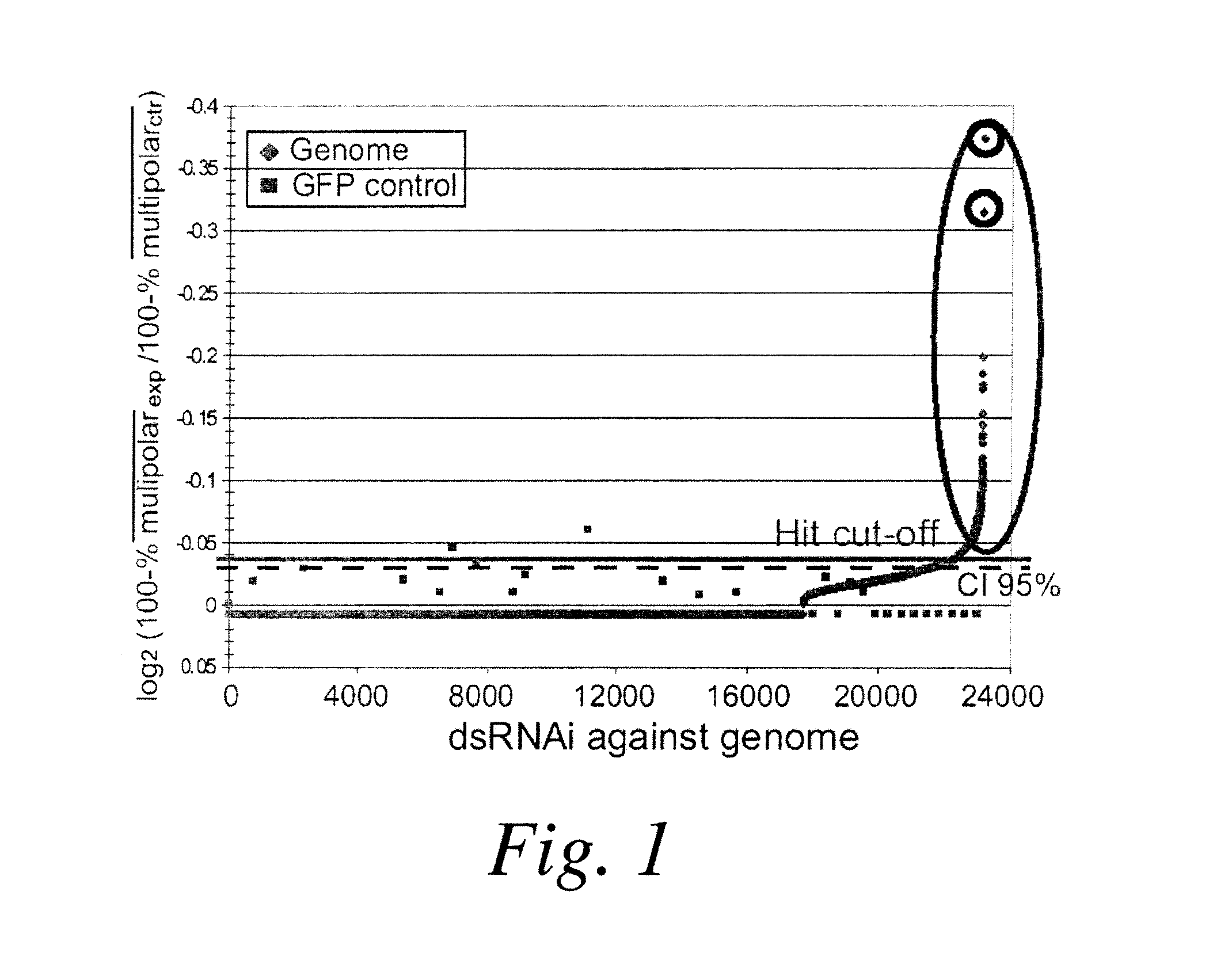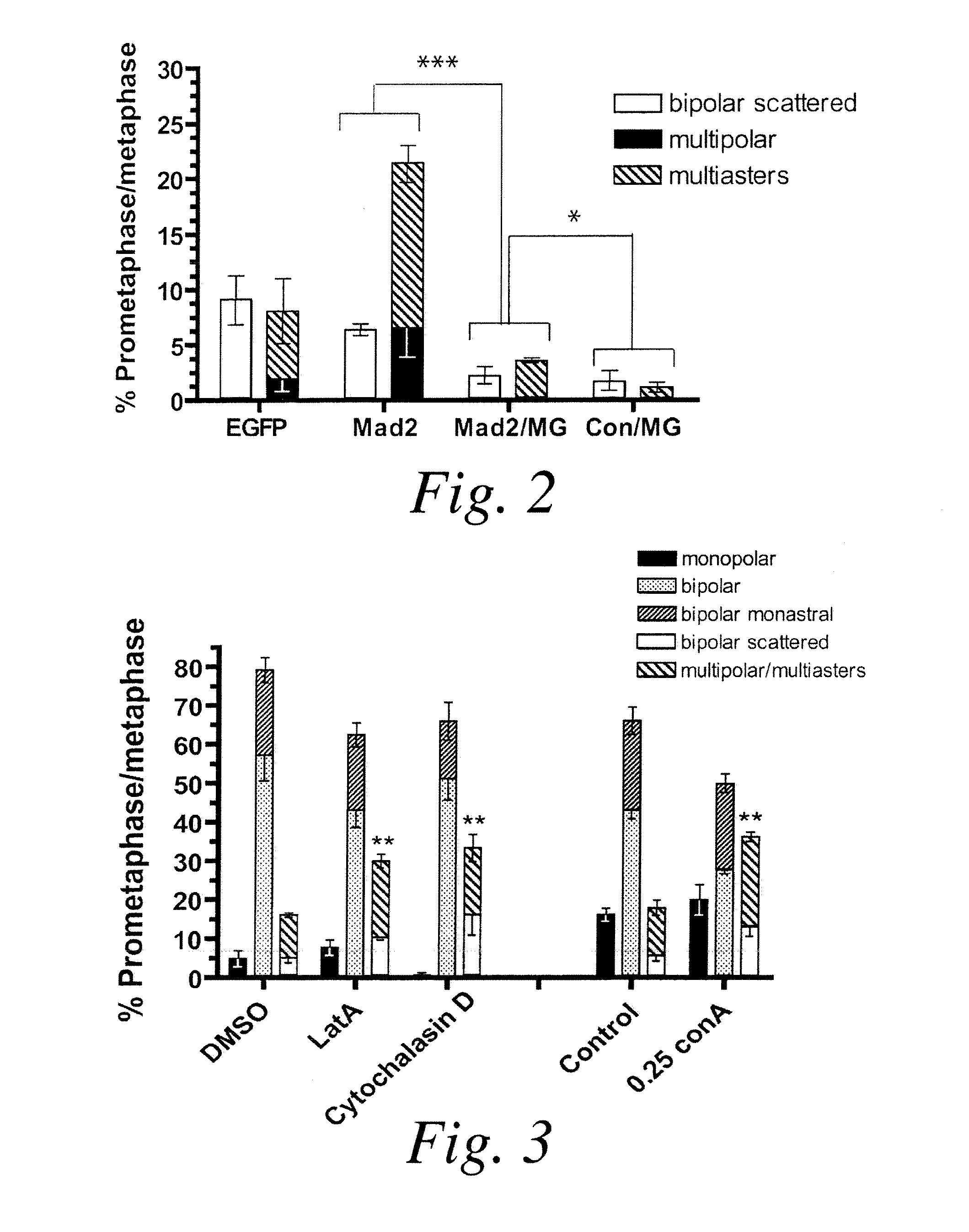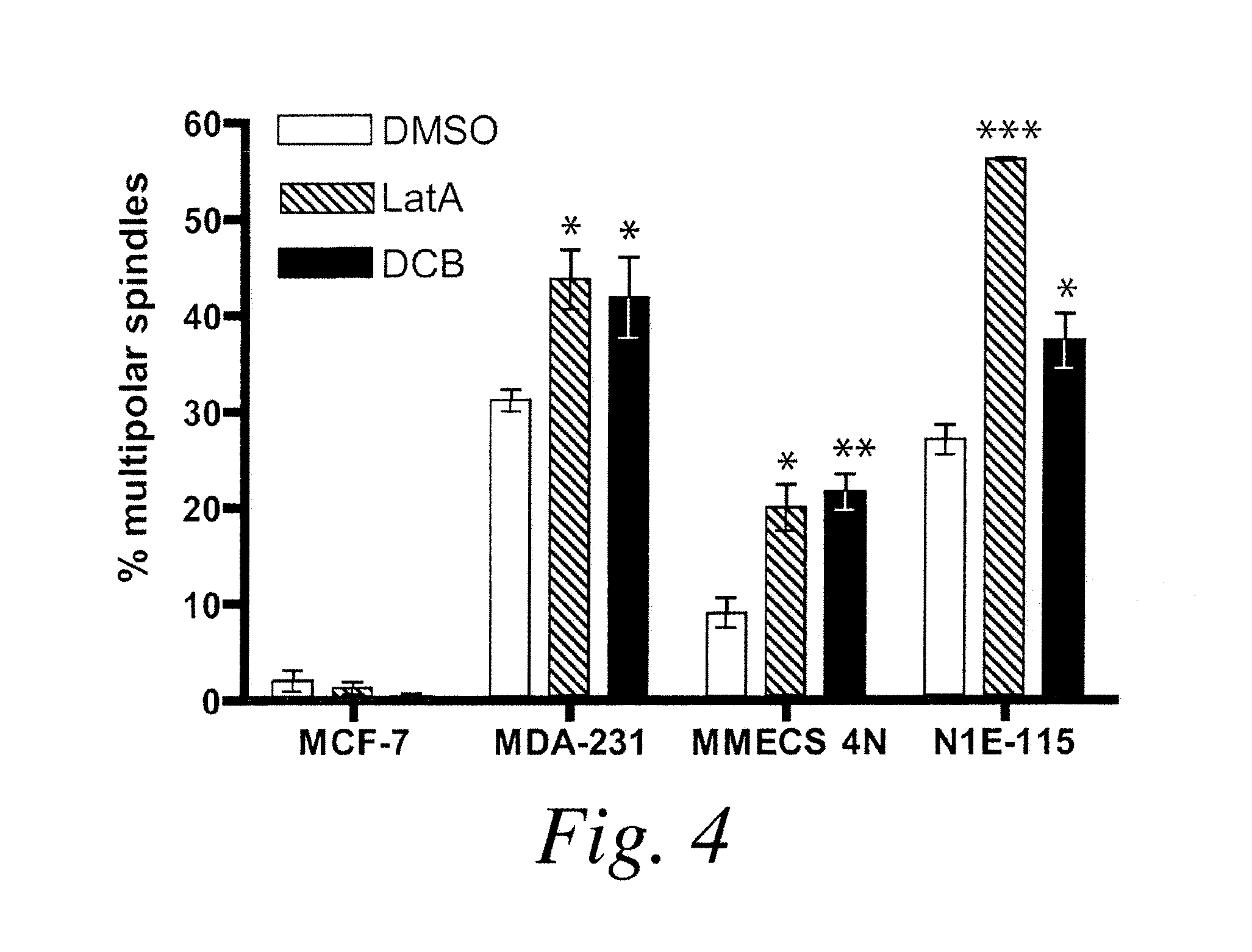Methods of treating a meiotic kinesin associated disease
a meiotic kinesin and associated disease technology, applied in the field of meiotic kinesin associated disease treatment methods, can solve the problem of imposing fitness costs on the growth of mature cancers, and achieve the effect of avoiding the killing of normal cells
- Summary
- Abstract
- Description
- Claims
- Application Information
AI Technical Summary
Benefits of technology
Problems solved by technology
Method used
Image
Examples
example 1
Identification of Therapeutic Targets for the Treatment of Meiotic Kinesin Associated Diseases or Disorders
[0084]In this example, an RNAi screen was used to comprehensively define the molecular pathways required for clustering supernumerary centrosomes. Of 8 Drosophila cell lines characterized, the near-tetraploid S2 cells were most suitable for the screen because >50% of cells contain extra centrosomes which are efficiently clustered into two poles during mitoses. The scheme for the genome-wide screening is illustrated in FIG. 1, which provides details of the procedures for the primary and secondary screens.
[0085]23,172 dsRNAs targeting ˜99% of the Drosophila genome (˜14,000 genes) were screened to identify genes whose knockdown leads to multipolar spindles (centrosome de-clustering) in S2 cells. S2 cells were exposed to dsRNA for 4 days and mitotic figures were enriched by treatment with the proteasome inhibitor MG132 during the last 9 hours of the RNAi treatment. Cells were stain...
example 2
The Spindle Assembly Checkpoint (SAC) Prevents Multipolar Mitoses
[0092]The SAC components Mad2, BubR1 (human Bub1) and CENP-Meta (human CENP-E) are required for centrosome clustering. FIG. 2 illustrates that Mad2 is required for centrosome clustering. Centrosome clustering defects were scored in 62 cells upon RNAi of EGFP, Mad2 alone and EGFP or Mad2 plus 7 hours of MG132 treatment. The graph of FIG. 2 shows the average of three independent experiments (mean±Sd, *p<0.05; ***p<0.001, Student's t test).
[0093]The results shown in FIG. 2 indicate a role for the SAC in the process of centrosome clustering. This requirement was even more evident in cells that were not treated with MG132, indicating that the short treatment with MG132 employed in the screen partially masked the effect of SAC gene RNAi on spindle multipolarity. This finding was somewhat surprising, given previous work in PtK1 cells suggesting that the SAC is not activated by multipolar spindles or multiple centrosomes (Slud...
example 3
Spindle-Intrinsic Pole Clustering Forces Prevent Multipolar Mitoses
[0095]Previous work in 32 cells has demonstrated a critical role for MT motors and MAPs in spindle pole focusing (Goshima, G. et al. (2005) J Cell Biol 171:229-240; Morales-Mulia, S. and Scholey, J. M. (2005) Mol Biol Cell 16:3176-3186). The screen described in Example 2 1 identified Ncd, a Kinesin-14 family member, as the strongest hit in the primary screen. Ncd is a minus end-directed motor that bundles MTs at the spindle poles (Karabay, A. and Walker, R. A. (1999) Biochemistry 38:1838-1849). By GFP-SAS-6 labeling, it was demonstrated that Ncd is required to cluster multiple centrosomes. Drosophila dynein was not identified in the screen. This is expected because in S2 cells loss of dynein does not significantly induce multipolar mitoses, although it does compromise centrosome attachment and tight focusing of the spindle poles (Goshima, G. et al. (2005) J Cell Biol 171:229-240). Further validation of the screen con...
PUM
| Property | Measurement | Unit |
|---|---|---|
| Fraction | aaaaa | aaaaa |
| Fraction | aaaaa | aaaaa |
| Fraction | aaaaa | aaaaa |
Abstract
Description
Claims
Application Information
 Login to View More
Login to View More - R&D
- Intellectual Property
- Life Sciences
- Materials
- Tech Scout
- Unparalleled Data Quality
- Higher Quality Content
- 60% Fewer Hallucinations
Browse by: Latest US Patents, China's latest patents, Technical Efficacy Thesaurus, Application Domain, Technology Topic, Popular Technical Reports.
© 2025 PatSnap. All rights reserved.Legal|Privacy policy|Modern Slavery Act Transparency Statement|Sitemap|About US| Contact US: help@patsnap.com



